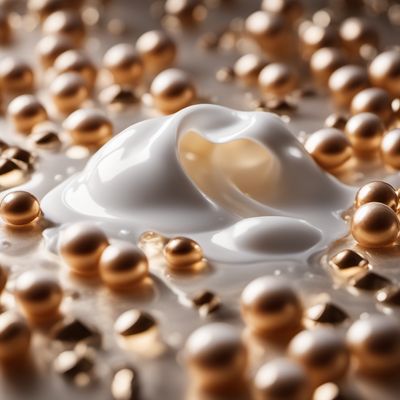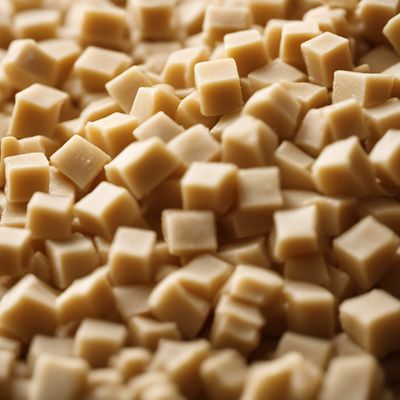
Ingredient
Gluten
The Protein Powerhouse: Unveiling the Secrets of Gluten
Gluten is a complex protein composite that gives dough its stretchy and elastic texture, allowing it to trap air bubbles and rise during baking. It is formed when two proteins, glutenin and gliadin, combine with water, creating a network of interconnected strands. This unique characteristic of gluten makes it an essential ingredient in many baked goods, such as bread, pizza dough, and pastries. Its presence also contributes to the chewiness and texture of pasta and other wheat-based products.
Origins and history
Gluten has been a staple in human diets for thousands of years, with its origins traced back to the cultivation of wheat in ancient Mesopotamia. It played a significant role in the development of agriculture and the rise of civilizations, as wheat became a primary food source. Over time, gluten-rich grains like wheat, barley, and rye spread across different regions, influencing the culinary traditions and cultural heritage of various civilizations.
Nutritional information
Gluten is primarily a source of protein, containing essential amino acids necessary for building and repairing body tissues. However, it is important to note that gluten is not suitable for individuals with celiac disease or gluten sensitivity.
Allergens
Gluten is a known allergen for individuals with celiac disease, an autoimmune disorder triggered by the ingestion of gluten. It can cause severe digestive issues and damage to the small intestine in affected individuals.
How to select
When selecting gluten-containing products, look for labels that indicate the presence of gluten or gluten-containing grains. Additionally, opt for products with a clear "gluten-free" label if you are avoiding gluten due to dietary restrictions or allergies.
Storage recommendations
To maintain the freshness and quality of gluten-containing products, store them in a cool, dry place, preferably in airtight containers. Avoid exposure to moisture, as it can cause the gluten to become sticky or develop mold.
How to produce
Gluten is not produced independently but is naturally present in grains like wheat, barley, and rye. It is formed when these grains are combined with water and kneaded, activating the gluten proteins.
Preparation tips
When working with gluten-containing flours, it is important to handle the dough gently to avoid overdeveloping the gluten, which can result in a tough texture. Kneading the dough for an appropriate amount of time and allowing it to rest before shaping or baking can help achieve optimal results. Additionally, incorporating gluten-free flours or binders can be a suitable alternative for individuals with gluten sensitivities or dietary restrictions.
Substitutions
For individuals avoiding gluten, suitable substitutes for gluten-containing flours include almond flour, coconut flour, rice flour, or gluten-free flour blends. These alternatives can be used in various recipes, but adjustments may be needed to achieve the desired texture and consistency.
Culinary uses
Gluten is widely used in baking, providing structure and elasticity to bread, cakes, cookies, and pastries. It is also a key ingredient in pasta, giving it its characteristic chewiness. Additionally, gluten is used as a binder in processed foods like sausages, meatballs, and vegetarian meat substitutes.
Availability
Gluten is commonly available worldwide, as it is present in grains like wheat, barley, and rye, which are cultivated in numerous countries.





